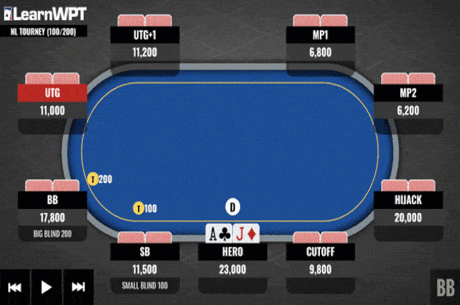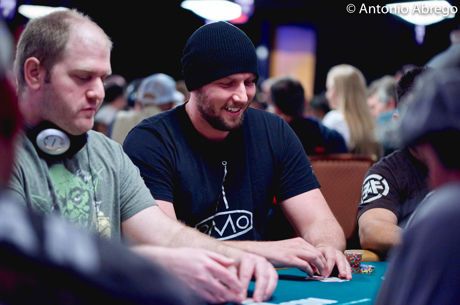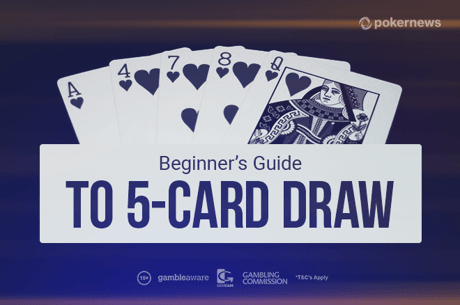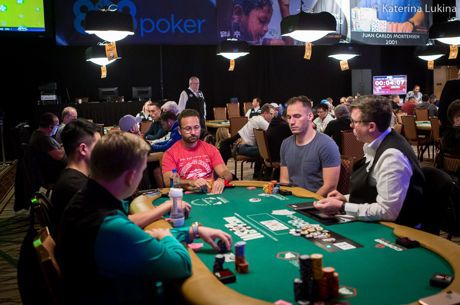Deconstructing a World Series of Poker Circuit Ring Win, Part 1
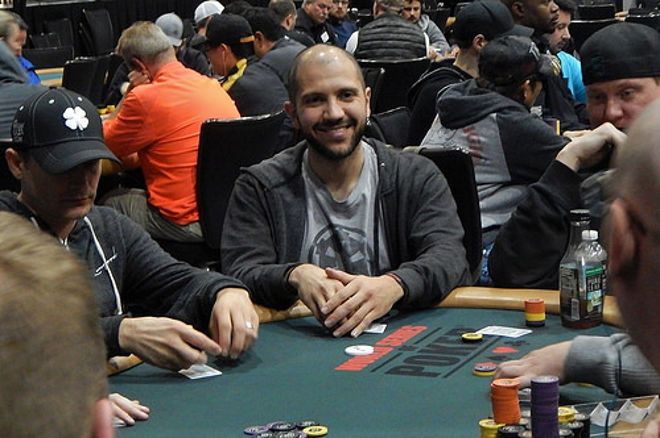
Every year, thousands and thousands of players enter World Series of Poker Circuit events hoping to walk away with a gold ring as proof of triumph. A few hundred will do so.
This year, I was one of them. Earlier this month I was fortunate enough to win the $600 H.O.R.S.E. event at WSOP Circuit Horseshoe Hammond, located just outside of Chicago. For topping a field of 85 players, I earned just over $14,000 in prize money and my first piece of WSOP-C hardware after firing many bullets and having a few close calls over the years.
Over the next two weeks, I thought I'd take a slight detour from my normal strategy series and deconstruct my ring win �� a debriefing of sorts. Of course, there were many hands played in the event, some of them memorable, but limit poker is a bit less exciting than no-limit to analyze in most cases. Options are fewer, and the upside of a correct decision is usually something like saving or gaining a single bet, whereas in big-bet games it can mean saving or winning a tournament.
With that in mind, I thought I'd start with a look at some of the specifics of the H.O.R.S.E.-ament, examining both the format in general at this buy-in level as well as some of the individual games. For part two, I'll zoom back a bit and offer some thoughts on tournaments as a whole and the process that helped me arrive at my win.
H.O.R.S.E. Tournaments and the WSOPC
Perhaps the oldest and most tried-and-true "mixed game" in poker, H.O.R.S.E. tournaments have been around a long time but have become a bit of a novelty at festivals like the WSOP Circuit. This saddens me a bit because these are some of the most fun and best value tournaments out there.
First, I'd like to say hats off to the WSOP-C. I admittedly have little to compare it to, but I thought the structure was fantastic and offered plenty of play, particularly late. Even after three hours of heads-up war, my opponent Michael Hanson and I each had over 10 big bets, which still gives a player some wiggle room. For reference, 20 big bets is quite a large stack and wouldn't look out of place on a cash game table.
And as I said, the value present in these events is really high. Many of the players have little to no experience in one or more of the games. Mixed games are fun, and many enjoy the challenge of shifting from game to game, including less experienced players who just want a little more bang for their buck, getting to play more games for a longer time due to the limit format.
Simply using some starting hand basics and pushing harder than other players on steals and value-bets was enough to make me a comfortable favorite, despite the fact that I very rarely play limit poker. I'd highly suggest any player looking to attend poker festivals with limit tournaments round out their games a little with some practice and study to prepare for these so you aren't just skipping these days or punting off and waiting for the next big-bet event.
Game By Game
I went into this a little bit recently during my appearance on The Bernard Lee Poker Show, but I thought I'd run through some stream-of-consciousness thoughts on playing the games in the H.O.R.S.E. mix in a small-stakes tournament.
Hold'em
Limit hold'em might be my worst game in the mix. While I've actually played some of the stud games in drunken media mixes and watched people play them while covering tournaments at the WSOP, I don't get to watch or play much limit hold'em.
Hold'em is likely the game least alien to my dear readers, so I won't get too deep into it. I will say there wasn't nearly enough aggression. Get some extra bets in there with ace-king, and check-raise some draws against late-position raisers on the flop and turn. The one big bluff I did attempt to run got picked off by ace-queen high, so at least one person thought I was out of line.
Omaha Hi-Lo
Starting hand selection was the biggest leak I was seeing here. Folks were cold-calling raises without an ace in their hands with stuff like 2x3x7x8x. This is just a recipe for disaster as you will rarely have a two-way hand, and only a multi-way pot will offer any value if you make the nut low.
Even worse, people were playing hands with mediocre high value �� i.e., hands with jacks and tens and pairs of queens in them. Yes, these hands will sometimes scoop by virtue of no low being out there, but only the strongest of high-only hands should generally be played, and mediocre pairs and non-nut straights don't really qualify.
Stud Variants
Each of the stud games �� razz, seven-card stud, and seven-card stud hi-lo �� has its own quirks, but I'm going to lump them together here for brevity's sake as some of the stuff I was seeing held across all of the games.
The main one I saw was not nearly enough stealing and restealing. If someone with any sort of clue is completing from late position and you have a decent up card, you should frequently come after them with a raise. Often, they'll have nothing and give up on an early street. If your board runs out poorly, you can get away from the hands without anyone being the wiser that you were out of line. If theirs does, you'll win the pot almost always.
In both stud and stud hi-lo, I'd also frequently see players who should have been completing only coming in for the minimum. Stealing the antes is immensely valuable, especially on certain levels where the ante is large relative to the bets. Be aware of these spots and steal more aggressively, but also be aware when it's not the case �� particularly when short-handed �� and tighten up.
Those are some H.O.R.S.E.-ament-specific thoughts. Next time I'll share some more ideas about tournaments, generally speaking, and more about what carried me to the win.
Photo courtesy of WSOP

